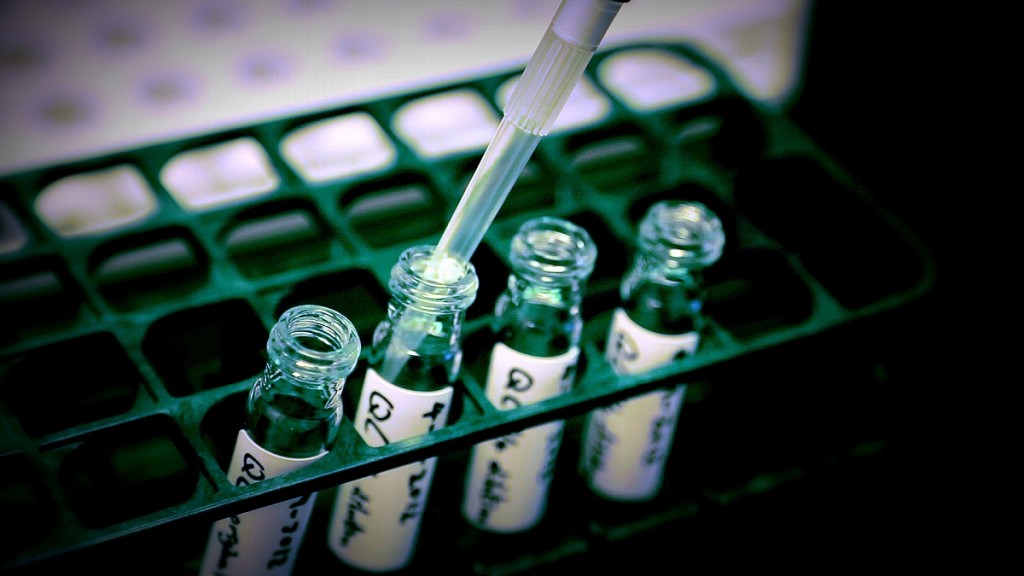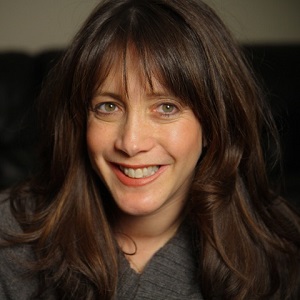Dana Nachman Talks about Co-Directing Her New Documentary ‘The Human Experiment’ and the Perils of Chemicals in Everything We Buy

Human X test tubes as seen in “The Human Experiment.” Photo: “The Human Experiment.”
The advent of chemical engineering has brought ease and utility to many lives. But a deadly specter hangs over these seemingly wonderful advancements. From metallic construction components to the plastics in everyday objects, modern life is made of synthetic materials, bringing people into contact with molecular distortions at every turn. Many of these same chemicals are potentially harmful to humans on a cellular level, and the lack of industry regulation may be leaving the entire population vulnerable to long term devastation.
In the opening moments of The Human Experiment, a new documentary from co-directors Dana Nachman and Don Hardy, narrator Sean Penn provides some unsettling figures. Over the last 45 years, rates of infertility have risen 49 percent, devastating couples like Jenn and Noah Canvasser, who are featured in the film. Over the same period, rates of breast cancer have risen 30 percent in women, but also unexpectedly in men, undermining statistical anomalies and indicating a new, unusual cause of illness. Conditions in children are up as well, including cases of brain cancer, early onset puberty, ADHD, leukemia, asthma, life-threatening birth defects, and genital deformations in baby boys. All of these rising illnesses point to chemical exposure, which has exploded over the same period of time.
Compelling as this news may be, the film doesn’t end there with pleasant news about government crackdowns or repentant chemical companies. Instead, The Human Experiment launches an investigation into the pitiful state of manufacturing regulations around the globe and the difficulty many reformers face when taking on this powerful, often insidious industry. From the toothless Toxic Substances Control Act of 1976 to the evidence-erasing PR machine built in the model of Big Tobacco, the chemical industry has avoided governance and blinded the public to the real dangers lurking in their products. In their film, Nachman and Hardy sought to puncture this widespread ignorance and systemic corruption. They champion the reform cause, highlighting stories of those directly harmed by toxic substances and, hopefully, inspiring audiences to action.
With Penn’s support as executive producer and a cast of scientific experts, Nachman and Hardy draw attention to an ugly issue and an even uglier industry, all in an attempt to stop the so-called “human experiment” before it can ruin any more lives.
GALO talked with Nachman, who lives in Northern California with her husband and three kids, just before the film’s theatrical release and VOD distribution on April 17. The three-time Emmy winner discussed her interest in the chemicals issue, activist and collaborative filmmaking, and reasonable ways for audiences to get involved.
GALO: You’re flying to New York for the premiere of The Human Experiment this Friday. How are you feeling about it?
Dana Nachman: I’m so excited. I’m actually at festivals with my next film [Batkid Begins], so it’s just a very funny experience to go back and forth. I heard Human Experiment went up on the marquee at The Village Cinema, and I can’t wait to see that myself. I’m looking forward to it. It’s been a long time coming.
GALO: Since it’s been such a long process, why don’t we start at the beginning?
DN: I actually don’t remember anything about it [laughs].
GALO: Right. What is this film again? It’s something about chemicals… [Laughs] But seriously, this is such an interesting issue. How did you first get involved?
DN: I was a producer at NBC, here in the Bay Area. I got assigned to do a five-part story on “How to Detoxify Your Home.” I had no idea your home might even be toxic to begin with. I learned a bit about it, and I think my reaction was like a lot of people’s first reactions to this issue. I just thought, ‘Oh my lord.’ I just had no idea. I had two very small children and it really freaked me out. The more I learned, the more shocked I was. It wasn’t the sort of shock that goes away after a few days. It was an onslaught of information that I wasn’t happy about.
So I got done with that series and I wanted to dig deeper into the issue of chemicals. I wasn’t even a specialist in environmental journalism. That wasn’t even my beat. I came to it from a new, fresh place, so there was a lot of learning to do. It was essentially a four year odyssey delving into the issue, learning all about it, and going through the emotions this knowledge brings you to.
GALO: Why do you think this issue has been so slow to gain attention when it is such a striking thing to learn?
DN: That’s a great question. I’m not sure. I think part of it is [that] the issue is so daunting. It is so far-reaching. It covers everything in our lives.
Also, one thing I find fascinating — and that I hope the film brings out — is that I think people want an easy answer: “X chemical causes X disease.” That, unfortunately, does not happen for the most part. It’s this mosh pit of chemicals we’re exposed to. It will affect some people and not others. There are question marks. I think humans don’t like to deal in gray areas, so that might be why it has taken a long time to come to public attention. There are a lot of ways you can say, “No, this doesn’t matter.”
I think what’s interesting is that parent groups have really taken the lead on this issue. I can understand that personally. If I had covered this story before I had kids, I don’t think I would have cared as much. When you’re a young adult, you think you’re invincible. But when you have kids, it’s totally different. You think, ‘Okay, I can take some risks with myself, but not with my kids.’ Parent groups and parent activists have really led the way here. I can relate because I might change a product for my kids before I change one for myself.
GALO: How do you think approaching this project as a parent, but also as a general layman reporter has affected the final product?
DN: I think, coming to it more as a layperson, [it] hopefully makes the film more relatable, not marred in too many scientific specifics. We tried to take a survey approach and a human approach to it. That’s why we concentrated on people who were affected by chemicals personally. Then we peppered in researchers who can speak in an approachable way about their work. We tried to take a common sense approach to it. I think one of the last soundbites in the movie is, “Let’s do what’s reasonable. We don’t have to take away all chemicals. We don’t have to believe everything is killing us. But let’s take a measured, thoughtful approach to what we’re doing.” That’s the same sort of approach we took in the film because we weren’t really versed in the topic.
GALO: One other thing that’s raised in the film, which may have contributed to your approach as well, is the so-called “Tobacco Playbook.” These are tactics used by Big Tobacco to discredit research and silence reformers, which the chemical industry has since adopted. There’s some possibility that activists could use this knowledge to get ahead of chemicals, but did you also learn anything about that earlier activist struggle that informed this project?
DN: Stanton Glantz, who is in our film from UCSF (University of California, San Francisco), was a leading person on tobacco for all these years. He told us stories about that “Tobacco Playbook” that you’re referencing. It’s just the same stuff today. I think that to me is enough said about the issue. If people have to use tactics to convince us our products are safe, that should be telling. That to me was shocking.
I think it’s a great cautionary tale. I mean, for a hundred years, there has been science out there about what tobacco does to your health. But still, smoking is on the rise in kids today. The issue isn’t over. So, I think it’s a great point. I’m glad it made the film. I think it’s the way we should look at this. If it could happen with such a travesty like tobacco, it could happen in a lot of things.
GALO: A number of the people you interviewed in the film approach this issue in different ways. Some are protestors on the street, some are lobbyists, and some are legislators. What kind of action do you hope your movie inspires? Did you go into the project hoping to motivate activism?
DN: That’s such a great question because going into the movie we thought we would focus on legislative changes. Coming out at the end of the process — because it took us so long — we changed our position on effective change. The chemical companies have such a vested interest [in the political side] via lobbyists that it’s going to go on before we can pass some better legislation. It might even get worse before it gets better, which we’re seeing now.
We really believe now that consumer action is the way to make change. It’s continually getting better. When we were just getting started, I would go to my local CVS and there were would be a few [safe] products there. Now there’s an entire aisle.
Our tagline is “Switch to Safer.” I think this does two things. One, it moves the market in the right direction. You don’t even have to be an activist. Just go to the store and buy the better products. The companies see that before they see anything [else].

